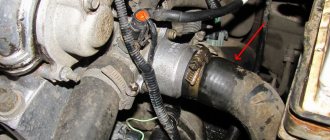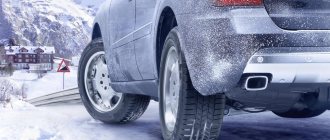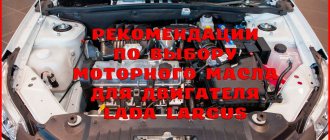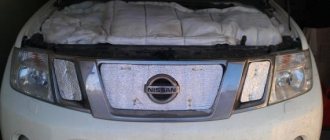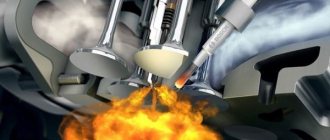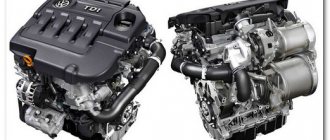How to clean the engine from oil and why do it? It's not a matter of appearance at all, this is completely different. The appearance of a car can tell a lot about the owner’s character and his concern for his iron friend. Hygiene rules are relevant for the car; this prolongs the wear resistance of the body and protects the car from corrosion. But when it comes to the internal parts of the car, few people know that they also need to be looked after and kept completely clean.
Why is engine flushing necessary and how is it done?
The engine of a car is its most important part. The durability of the engine directly depends on compliance with the temperature indicators, which are indicated in the data sheet. Contamination of any complex parts of the engine cooling system instantly reduces its performance. During operation, engine parts are subject to wear and tear. The result can be dust and oil stains. All these contaminants settle in the oil sump. And okay, even if they were there, they end up with the oil mixture in the car’s engine.
Moreover, every little thing passes through oil filters perfectly. In order to avoid overheating of the engine, which is facilitated by layers of dirt or oil, all this must be removed. It is necessary to wash the engine of oil due to a fire hazard. Layers of oily dirt can ignite when exhaust gases break through or when a small spark appears. Before undergoing a technical inspection, it would also be a good idea to wash the engine of oil.
The oil system is cleaned when changing the oil. This is done to ensure that not only the engine is clean, but also the oil. This will reduce the load on the system and slow down its aging. Technical means, washing emulsions of the brands “Lukoil”, “Halo” and others are perfect for washing the engine.
A car, like a woman, loves to be looked after, and the more attention the driver pays to his “swallow”, the more return he gets from it. All this applies not only to the cleanliness of the interior, glass, etc., but also to the cleanliness of the engine. How to clean an engine from an oil film with dirt? Experienced drivers have a lot of advice on this matter. This work is not too difficult. But if we talk about old stains, then it is better to remove them using a power washing unit.
To achieve the desired result, you need to know how to wash the engine and how often to do it. To wash the engine, you should take water, cleaning agent, a brush and a rag. And the question immediately arises: how to wash a car engine? A caring driver uses special means. There are car enthusiasts who manage to make this a dishwashing detergent. There are those who wash the engine with kerosene the old fashioned way.
If the owner, not knowing how to clean the engine, tried to do it with diesel, then when the engine starts, toxic white smoke will come out in all directions, which can catch fire. And after such sanitation, you yourself will need a good shower and laundry. The same applies to flushing the engine with kerosene. If you decide to try dishwashing detergent, it cannot cope with severe contamination of the oil system or engine.
There are a variety of special products that allow you to perfectly clean your car engine. It can be a product of both domestic and foreign industry - you choose. It is very convenient to use aerosol products. If you still do not have an answer to the question of how to wash the engine, then a warning immediately - do not even think about using gasoline, as a fire or even a strong explosion may occur.
What problems can arise from a dirty engine?
Firstly , on a dirty engine it is very difficult to notice leaks of oil, coolant, etc. Subsequently, the car owner will not notice a small problem, which will definitely turn into a big one.
Secondly , thick layers of dirt complicate the normal heat transfer of the motor, and it will overheat. And this situation leads to a decrease in power, an increase in fuel consumption and accelerated wear of the internal combustion engine.
Thirdly , the possibility of electric current leaks on dirty electrical wiring is higher, which will make it difficult to start the engine in some cases.
Fourthly , oil traces inevitably evaporate and form highly flammable vapors, which increases the possibility of fires in the engine compartment.
And finally , in a dirty engine compartment it is not so pleasant and easy to carry out repair and maintenance work. The owner of a car with heavily soiled internal mechanisms may simply be refused service at a car repair shop.
How to clean the motor?
You need to wash the engine correctly. Before starting hygiene procedures, you should carefully cover all parts of the electrical equipment system, otherwise water may get inside and the motor will fail. You should make sure that the power unit has cooled down, otherwise all the products that are applied to the surface will quickly evaporate or dry out, and they will have to be applied again.
The applied product is left for a couple of minutes on the surface of the oil system or engine. It begins to dissolve layers of dirt. If the layer is very thick, then before washing the engine, it should be cleaned with a special scraper. If dirt and carbon deposits have accumulated in places that cannot be easily cleaned, then you should use a thin brush.
A specialized product should be applied and left for some time.
After you have finished washing the engine, you need to dry it. This can be done using a dryer or, if there is none, open the hood and leave the car in the sun. To prevent a corrosive rash from appearing on the battery, it must be treated with a soda solution and then dried. And if you wash the engine, then you need to pay attention to the attached devices; they can be cleaned with a solvent.
Some people ask how to clean the engine from oil using steam. The procedure is simple. Pressurized steam is supplied to the engine lining. This steam bath for a motor is based on the fact that hot steam very effectively dissolves an oily film with dirt. But this method is only suitable for those who have a steam generator. Others must use other methods and options.
After washing the engine the car does not start, what should I do?
Often after washing the engine it does not start and this is common. The main reason is moisture entering the electronics system, which does not allow the engine to start, but at this very moment the starter is spinning and there are attempts to seize, but the unit cannot start. Moisture gets in due to the main mistake - washing under high pressure reaches 100-150 bar, due to which the water flow can penetrate anywhere, even into the spark plugs.
The biggest problem after washing the engine is with the ignition system. To solve it, you need to disassemble the distributor and wipe everything dry, then blow it with a compressor, wipe the wires, dry the wells for installing spark plugs with a compressor, and then you can start the car.
In models where individual ignition coils are installed instead of a distributor, you need to remove each one separately and blow out the wells; it is also worth blowing out the entire engine and engine space with a compressor and additionally leaving it to dry for 3-4 hours with the hood open. By the way, it is better to carry out all of the above actions before the first start of the engine after washing, otherwise, if moisture is found where it is now described, you can get several non-working coils. Often the coils remain unharmed, but the spark plugs themselves fail and only need to be replaced with new ones.
How to properly clean dirt from an engine
It is logical that a competent car enthusiast will monitor the cleanliness of the engine. How to do this correctly on your own, without resorting to the help of third parties?
Any wash begins with the selection of a special engine cleaning product. Using household cleaning liquids is ineffective because they will not be able to dissolve oil-containing dirt.
Also, many people believe that household high-pressure washers will help quickly clean the engine, but such a procedure is actually dangerous. The jet of water easily damages various seals, causing corrosion in the generator and other electronics, washing off important stickers from components and can even damage the paintwork. As an alternative, compressed air is used, but it is ineffective in hard-to-reach places and in heavily contaminated areas.
The most effective cleaning method
It is best to adhere to the following engine washing algorithm. Before starting, you need to insulate with polyethylene and tape all components vulnerable to water: electrical connectors, generator, air filter air intake, relays, etc. The battery needs to be removed. For greater efficiency, the engine should be warmed up at idle, but it should not be hot.
A special foam cleaner removes dirt best. It must be applied to all surfaces and wait a few minutes for it to be absorbed. Active, stable foam very effectively removes the oldest and most burnt stains without harming plastic and rubber. For hard-to-reach places and the heaviest dirt, you should use a stiff brush. Then we wash off the detergent with a weak stream of water, wipe the accessible areas with a clean rag and remove all the applied insulation.
Cleaning the battery
The battery is treated with a mixture of water and baking soda in certain proportions. This procedure will perfectly protect the terminals from corrosion, improve engine starting and slightly increase battery life.
It is necessary to dry the moisture after washing
If you have a compressor, the process of drying a washed engine will be the simplest and fastest, however, a household vacuum cleaner or a can of compressed gas will also significantly speed up the evaporation of water. As a last resort, you can start the car and let it run for five minutes. However, drying is an important part of rinsing and should not be skipped as moisture can cause great harm to electronics.
What is the best way to wash at home?
Cleaning and washing the engine is not a complicated process, quite accessible to every motorist. The main problem lies largely in the choice of detergents and adherence to a certain technology. alkaline detergents or shampoo concentrates for washing the car are best suited
Using a sprayer, the solution is applied to the engine compartment and hard-to-reach places. Next, you need to wait 10-15 minutes until the product eats away the dirt, then rinse everything off with water pressure. Using brushes and sponges to wipe off dirt is highly undesirable , as it is easy to damage wiring and other attachments. Washing should be as contactless as possible .
By adhering to this algorithm for washing the engine compartment, you will definitely not harm the components and assemblies. It is recommended to wash it when it gets dirty, which greatly depends on the climate and operating conditions. Additionally, it is worth washing the engine before diagnostic and repair work, and when selling, this easy task will improve the perception of the car in the eyes of the buyer.
The benefits of cleaning the engine
The “heart” of the car is surrounded by dozens of different attachments: starter, generator, pump, radiator and a host of others. All of them help you fully experience the delights of a vehicle on four wheels. However, like an engine performing its functions, they leave behind some traces. Hard-to-remove oil, antifreeze, electrolyte and other working fluids with a chemical structure are integral elements of any contaminated engine. I am sure the happy owners of a domestic VAZ car understand what I mean. Add dust and dirt to this, and we get unfavorable conditions for the operation of the power unit, which affect the stability of operation, as well as the level of engine performance.
Of course, if you follow the recommendations of specialists and carry out general cleaning of the engine compartment at least several times a year, all this can be avoided. Otherwise, don't be surprised if the car suddenly starts acting up.
